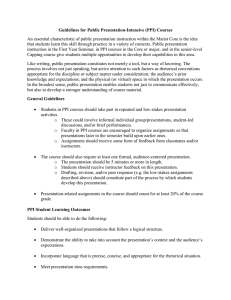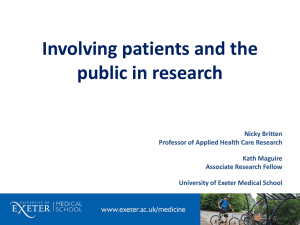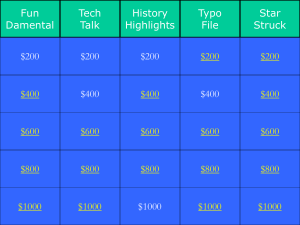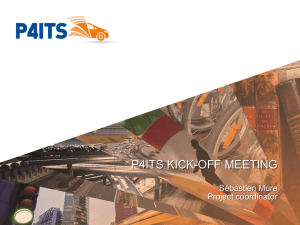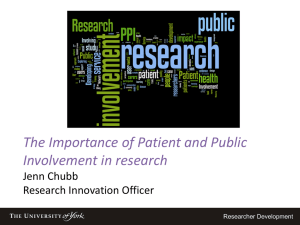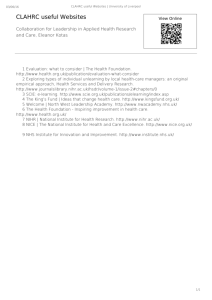PATIENT AND PUBLIC INVOLVEMENT AND ENGAGEMENT (1 PAGE)
advertisement
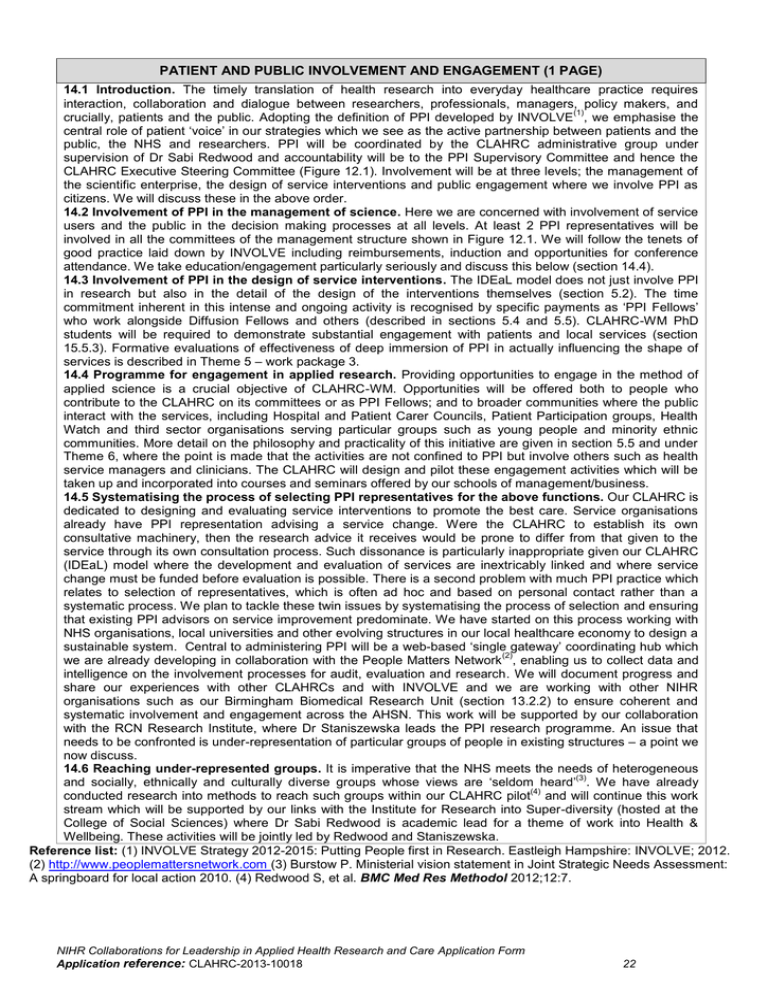
PATIENT AND PUBLIC INVOLVEMENT AND ENGAGEMENT (1 PAGE) 14.1 Introduction. The timely translation of health research into everyday healthcare practice requires interaction, collaboration and dialogue between researchers, professionals, managers, policy makers, and (1) crucially, patients and the public. Adopting the definition of PPI developed by INVOLVE , we emphasise the central role of patient ‘voice’ in our strategies which we see as the active partnership between patients and the public, the NHS and researchers. PPI will be coordinated by the CLAHRC administrative group under supervision of Dr Sabi Redwood and accountability will be to the PPI Supervisory Committee and hence the CLAHRC Executive Steering Committee (Figure 12.1). Involvement will be at three levels; the management of the scientific enterprise, the design of service interventions and public engagement where we involve PPI as citizens. We will discuss these in the above order. 14.2 Involvement of PPI in the management of science. Here we are concerned with involvement of service users and the public in the decision making processes at all levels. At least 2 PPI representatives will be involved in all the committees of the management structure shown in Figure 12.1. We will follow the tenets of good practice laid down by INVOLVE including reimbursements, induction and opportunities for conference attendance. We take education/engagement particularly seriously and discuss this below (section 14.4). 14.3 Involvement of PPI in the design of service interventions. The IDEaL model does not just involve PPI in research but also in the detail of the design of the interventions themselves (section 5.2). The time commitment inherent in this intense and ongoing activity is recognised by specific payments as ‘PPI Fellows’ who work alongside Diffusion Fellows and others (described in sections 5.4 and 5.5). CLAHRC-WM PhD students will be required to demonstrate substantial engagement with patients and local services (section 15.5.3). Formative evaluations of effectiveness of deep immersion of PPI in actually influencing the shape of services is described in Theme 5 – work package 3. 14.4 Programme for engagement in applied research. Providing opportunities to engage in the method of applied science is a crucial objective of CLAHRC-WM. Opportunities will be offered both to people who contribute to the CLAHRC on its committees or as PPI Fellows; and to broader communities where the public interact with the services, including Hospital and Patient Carer Councils, Patient Participation groups, Health Watch and third sector organisations serving particular groups such as young people and minority ethnic communities. More detail on the philosophy and practicality of this initiative are given in section 5.5 and under Theme 6, where the point is made that the activities are not confined to PPI but involve others such as health service managers and clinicians. The CLAHRC will design and pilot these engagement activities which will be taken up and incorporated into courses and seminars offered by our schools of management/business. 14.5 Systematising the process of selecting PPI representatives for the above functions. Our CLAHRC is dedicated to designing and evaluating service interventions to promote the best care. Service organisations already have PPI representation advising a service change. Were the CLAHRC to establish its own consultative machinery, then the research advice it receives would be prone to differ from that given to the service through its own consultation process. Such dissonance is particularly inappropriate given our CLAHRC (IDEaL) model where the development and evaluation of services are inextricably linked and where service change must be funded before evaluation is possible. There is a second problem with much PPI practice which relates to selection of representatives, which is often ad hoc and based on personal contact rather than a systematic process. We plan to tackle these twin issues by systematising the process of selection and ensuring that existing PPI advisors on service improvement predominate. We have started on this process working with NHS organisations, local universities and other evolving structures in our local healthcare economy to design a sustainable system. Central to administering PPI will be a web-based ‘single gateway’ coordinating hub which (2) we are already developing in collaboration with the People Matters Network , enabling us to collect data and intelligence on the involvement processes for audit, evaluation and research. We will document progress and share our experiences with other CLAHRCs and with INVOLVE and we are working with other NIHR organisations such as our Birmingham Biomedical Research Unit (section 13.2.2) to ensure coherent and systematic involvement and engagement across the AHSN. This work will be supported by our collaboration with the RCN Research Institute, where Dr Staniszewska leads the PPI research programme. An issue that needs to be confronted is under-representation of particular groups of people in existing structures – a point we now discuss. 14.6 Reaching under-represented groups. It is imperative that the NHS meets the needs of heterogeneous (3) and socially, ethnically and culturally diverse groups whose views are ‘seldom heard’ . We have already (4) conducted research into methods to reach such groups within our CLAHRC pilot and will continue this work stream which will be supported by our links with the Institute for Research into Super-diversity (hosted at the College of Social Sciences) where Dr Sabi Redwood is academic lead for a theme of work into Health & Wellbeing. These activities will be jointly led by Redwood and Staniszewska. Reference list: (1) INVOLVE Strategy 2012-2015: Putting People first in Research. Eastleigh Hampshire: INVOLVE; 2012. (2) http://www.peoplemattersnetwork.com (3) Burstow P. Ministerial vision statement in Joint Strategic Needs Assessment: A springboard for local action 2010. (4) Redwood S, et al. BMC Med Res Methodol 2012;12:7. NIHR Collaborations for Leadership in Applied Health Research and Care Application Form Application reference: CLAHRC-2013-10018 22

